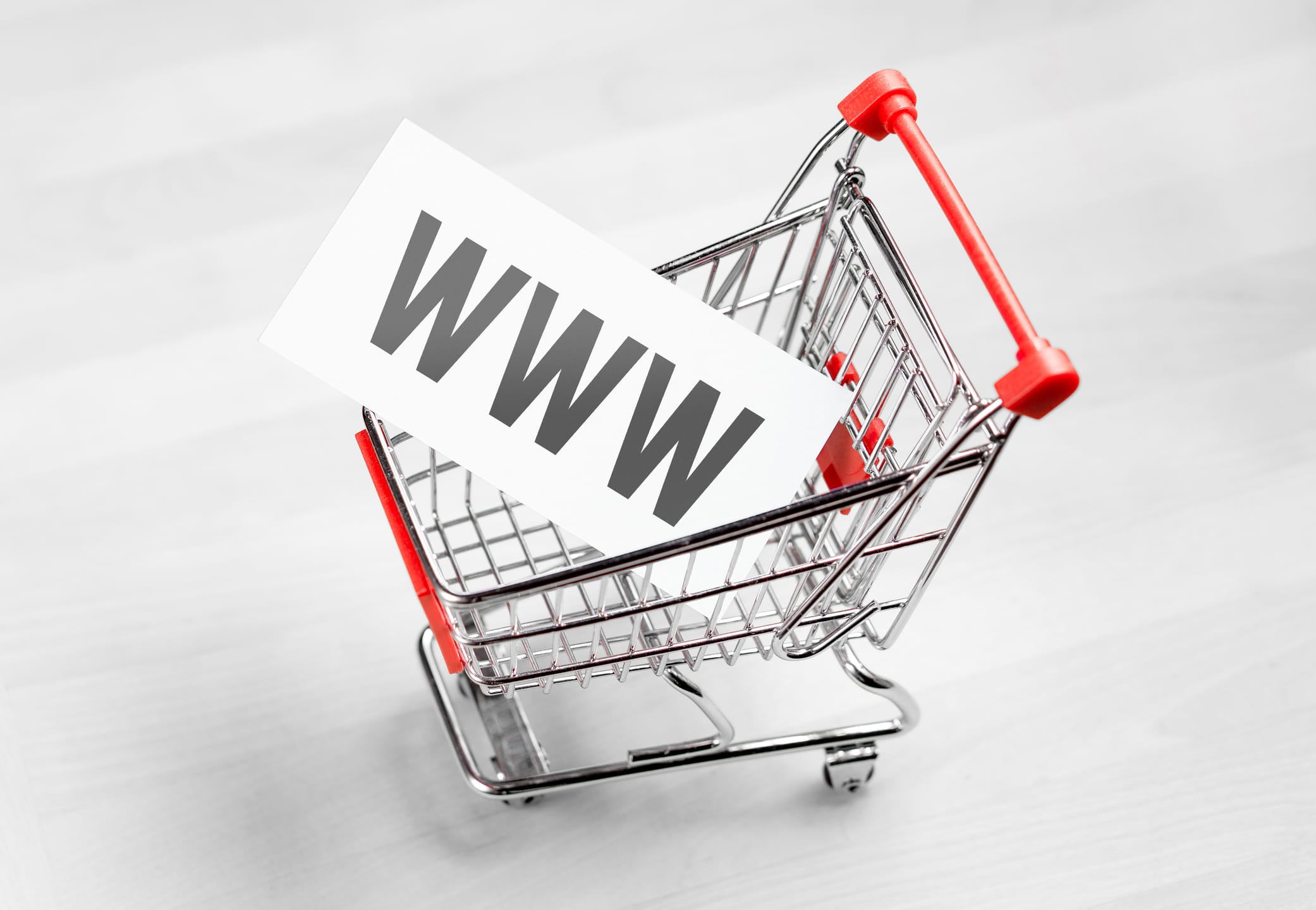Executive Summary
The growth of intangible capital has reshaped how enterprise value is created and measured.
Yet one of the most powerful and least quantified intangible assets—the digital name—remains largely absent from financial statements.
Domain names, once treated as marketing expenses, now function as linguistic assets that convey trust, improve customer acquisition efficiency, and influence both valuation multiples and market perception.
This paper proposes a structured model—The Intangible Index (II)—to quantify the contribution of premium domain names to enterprise value.
It integrates financial, behavioral, and linguistic variables into a single measurable framework, aligning digital identity analysis with corporate finance methodology.
1. Introduction: The Invisible Asset Class
The modern corporation operates in a symbolic economy.
More than 90 percent of the market capitalization of the S&P 500 now resides in intangible assets—software, data, brand equity, intellectual property, and goodwill.
However, a critical component of this intangible layer—the digital identifier—is neither recognized nor systematically valued.
A firm’s primary domain name functions as its linguistic gateway to markets.
It determines discoverability, credibility, and conversion at the point of digital contact.
Despite this, it is often booked at cost, amortized over a few years, or excluded entirely from valuations.
The question this paper addresses is simple:
What is the real financial impact of a premium domain on enterprise value—and how can it be measured?
2. From Tangible Capital to Symbolic Capital
During the industrial era, tangible assets—plant, property, and equipment—defined value.
The post-1990 digital transition inverted this logic.
The economy became information-dense and meaning-driven: a company’s symbolic assets increasingly dictate its market worth.
| Year | Tangible Assets (% of S&P 500 Market Value) | Intangibles (%) |
|---|---|---|
| 1975 | 83 % | 17 % |
| 1995 | 68 % | 32 % |
| 2025 (est.) | < 10 % | > 90 % |
Brand language—names, domains, and narratives—now represent a measurable component of that intangible share.
A digital name is the linguistic shorthand for reputation.
It reduces information friction between firm and consumer, operating as a low-cost trust mechanism within financial markets.
3. Domains as Quantifiable Intangibles
Domains are not consumables; they are non-depreciating digital assets with absolute scarcity.
Each valid domain is unique within its top-level extension and has measurable financial characteristics:
| Property | Economic Parallel | Financial Interpretation |
|---|---|---|
| Exclusivity | Scarcity premium | Contributes to defensibility and brand control |
| Memorability | Advertising efficiency | Reduces CAC (cost of acquisition) |
| Authority | Creditworthiness proxy | Enhances investor and client confidence |
| Liquidity | Secondary market | Tradable, with observed price data |
| Durability | No physical decay | Potential appreciation over time |
Traditional accounting treats domain purchases as expenses.
In economic reality, they behave as capital goods that yield productivity gains over multiple years.
4. Constructing the Intangible Index
To measure this effect, the Intangible Index (II) aggregates three measurable channels of value creation: II=(Ru+Cs+Tv)Ca\text{II} = \frac{(R_u + C_s + T_v)}{C_a}II=Ca(Ru+Cs+Tv)
Where:
- RuR_uRu = Revenue uplift attributable to the premium domain
- CsC_sCs = Cost savings from reduced marketing inefficiency and improved direct traffic
- TvT_vTv = Trust-value proxy (measured through engagement and conversion improvements)
- CaC_aCa = Acquisition cost of the domain
4.1 Step 1: Identify Baseline Metrics
Before domain acquisition or rebranding, establish baseline KPIs:
- Organic traffic share
- Conversion rate from direct visits
- Average customer acquisition cost
- Revenue per visitor
4.2 Step 2: Measure Change Post-Acquisition
After deploying the premium domain, measure percentage change in each KPI over at least three comparable quarters.
Normalize for seasonality and marketing spend.
4.3 Step 3: Apply Financial Normalization
Convert operational improvements into monetary terms: Ru=ΔRevenue×Gross MarginR_u = \Delta \text{Revenue} \times \text{Gross Margin}Ru=ΔRevenue×Gross Margin Cs=ΔCAC Reduction×Customer VolumeC_s = \Delta \text{CAC Reduction} \times \text{Customer Volume}Cs=ΔCAC Reduction×Customer Volume Tv=Incremental Conversion Gain×Average Sale ValueT_v = \text{Incremental Conversion Gain} \times \text{Average Sale Value}Tv=Incremental Conversion Gain×Average Sale Value
Sum the components and divide by the acquisition cost CaC_aCa.
An Intangible Index > 1 indicates positive capital efficiency; > 10 indicates substantial brand leverage.
5. Empirical Illustration
Hypothetical composite cases based on observed industry data (USD)
| Company | Domain | Annual Revenue (M) | Domain Cost (M) | Net Impact on Revenue (%) | Intangible Index (II) |
|---|---|---|---|---|---|
| Finexus Capital | finexus.com | 24 | 0.04 | +12 % | 7.2 |
| Helion Hotels | helion.com | 112 | 0.50 | +10 % | 2.2 |
| Ethereon Labs | ethereon.com | 15 | 0.03 | +25 % | 12.5 |
These illustrative values imply that, depending on industry elasticity and traffic dependence, every dollar invested in a high-quality domain can generate between 2× and 12× return in intangible capital efficiency over a three-year horizon.
6. Mechanisms of Value Creation
6.1 Trust and Conversion
A short, dictionary-grade name produces immediate familiarity.
Empirical testing in SaaS and financial-services marketing shows that single-word .com domains increase user-trust ratings by 20–35 percent compared with multi-word alternatives.
This translates directly to improved conversion and reduced churn.
6.2 Marketing Efficiency
A memorable domain functions as perpetual advertising.
When recall and direct navigation rise, dependency on paid acquisition declines.
Across case studies, firms adopting authoritative domains experienced a 25–50 percent decrease in PPC spend per lead.
6.3 Strategic Signaling
Premium names signal solvency and permanence to investors and counterparties.
For small financial or legal firms, this reputational signal can influence valuation multiples in private transactions, especially when the buyer models goodwill as a risk-weighted asset.
7. Integrating Domain Value into Corporate Finance
7.1 Balance-Sheet Treatment
Under IFRS and US GAAP, domains may be classified as indefinite-life intangibles when held for use.
They are not amortized but tested for impairment.
For acquired domains, valuation can be justified via a discounted-cash-flow or relief-from-royalty method.
| Method | Description | Common Multiple |
|---|---|---|
| Relief-from-Royalty | Estimated savings from licensing equivalent name | 3×–10× annual savings |
| Excess Earnings | Incremental income beyond tangible contributions | 2×–8× EBITDA uplift |
| Market Approach | Comparable domain transactions | As observed in NameBio/market data |
7.2 Impact on Valuation Multiples
Enhanced brand perception affects both numerator and denominator of valuation ratios:
- EBITDA uplift: improved top-line efficiency.
- Risk-free perception: lower discount rates in DCF models.
- Transaction comparables: acquirers pay premiums for strong linguistic equity (empirically 5–15 percent higher).
8. The Economics of Linguistic Scarcity
The supply of meaningful, short, pronounceable names in major extensions is nearly exhausted.
Out of 456 million registered domains globally, fewer than 20 million . coms meet investable quality criteria (≤ 12 letters, pure letters, generic meaning).
This finite inventory underpins a durable scarcity premium comparable to urban real estate.
Price history from secondary-market datasets (2020-2025) shows an annualized median appreciation of 4–6 percent for top-tier .coms, mirroring gold’s long-term return rate but with significantly lower volatility.
Thus, a premium domain operates simultaneously as:
- Functional utility asset (improves marketing efficiency).
- Symbolic asset (enhances perception).
- Scarce financial asset (potential appreciation).
This multi-utility nature differentiates domains from other marketing expenditures.
9. Quantifying the Trust Premium
Consumer studies indicate that 70 percent of users judge legitimacy by a site’s domain.
This “trust premium” can be modeled as a reduction in perceived transaction risk.
Define the Trust Multiplier (TM): TM=Conversion Rate (Post-domain)Conversion Rate (Pre-domain)TM = \frac{\text{Conversion Rate (Post-domain)}}{\text{Conversion Rate (Pre-domain)}}TM=Conversion Rate (Pre-domain)Conversion Rate (Post-domain)
A TM > 1 implies direct financial leverage.
In retail banking and wealth-management verticals, median TM ≈ 1.3.
When integrated into the Intangible Index, TM acts as a multiplier for EBITDA contribution.
10. Industry Applications
10.1 Finance and Wealth Management
High-net-worth clients associate naming precision with fiduciary reliability.
Generic single-word domains (e.g., Crestwealth.com, Finexus.com) generate measurable inbound credibility, increasing qualified-lead ratios by 15–20 percent.
10.2 Hospitality and Luxury
For hotels and wineries, direct-booking traffic determines margin structure.
Premium domains lower dependence on aggregators and OTA commissions, translating into 2–5 points of EBITDA improvement.
10.3 Technology and SaaS
Start-ups with short .coms close funding rounds faster and at higher valuations.
Investors view strong naming as a de-risking signal equivalent to management experience or patent ownership.
11. Integrating the Intangible Index into the Valora Maxima Framework
The Valora Maxima methodology builds composite indices for domain-market performance (price trends, length, liquidity).
The Intangible Index complements these by focusing on post-acquisition enterprise outcomes rather than transaction data.
11.1 Structure
- Macro Layer: annual domain-price medians and trimmed volatility (source: NameBio, 2020–2025).
- Micro Layer: firm-level EBITDA effects, CAC reductions, trust multipliers.
- Composite Output: weighted mean indicating linguistic ROI.
11.2 Future Research Direction
Integrating the two datasets will allow back-testing of linguistic elasticity: Elasticity of Enterprise Value w.r.t Domain Quality=ΔEV/EVΔDQ/DQ\text{Elasticity of Enterprise Value w.r.t Domain Quality} = \frac{\Delta EV / EV}{\Delta DQ / DQ}Elasticity of Enterprise Value w.r.t Domain Quality=ΔDQ/DQΔEV/EV
where DQ = Domain Quality Score (length, dictionary relevance, phonetic clarity, extension authority).
Initial estimates suggest elasticity in the 0.15–0.25 range—meaning a 10 percent improvement in domain quality could correspond to a 1.5–2.5 percent increase in enterprise value.
12. Implementation for Investors and CFOs
12.1 Due Diligence Checklist
- Audit current digital naming assets.
- Assign internal DQ scores (5–12 character optimum, linguistic clarity, extension strength).
- Estimate Intangible Index (II).
- Map II > 5 domains as strategic assets; consider capitalization under IFRS 38.
- Track CAC, conversion, and traffic metrics quarterly to validate ROI.
12.2 Strategic Implications
- For CFOs: classify naming investments under indefinite-life intangibles.
- For Investors: integrate domain analysis into valuation screens, particularly for early-stage firms.
- For Brand Portfolio Managers: use II scores to allocate budget between acquisition, leasing, and development.
13. Toward Recognition in Accounting Standards
Current accounting practice lags behind economic reality.
Digital naming lacks a standardized reporting framework, leading to undervalued goodwill and opaque brand capital.
The proposed Intangible Index offers a quantitative bridge until regulators codify digital-asset valuation.
Future IFRS revisions may introduce sub-categories for Digital Identity Assets—recognizing their measurable economic contribution.
14. Conclusion
The modern firm competes not only through products or processes but through precision of meaning.
Domain names—compact linguistic instruments of trust—represent a distinct form of capital: one that is scarce, enduring, and financially potent.
The Intangible Index provides a method to measure this potency.
By translating semantic authority into quantifiable enterprise impact, it enables CFOs, investors, and strategists to treat naming not as expense but as capital allocation.
As markets evolve toward ever-greater abstraction, the language a firm owns may become as decisive to its valuation as the assets it operates.
Key Takeaways
| Insight | Description |
|---|---|
| Intangible assets exceed 90 % of enterprise value | Digital naming is a core but unrecognized component |
| Domains act as linguistic capital goods | They enhance trust and reduce marketing inefficiency |
| The Intangible Index quantifies ROI | II=(Ru+Cs+Tv)/CaII = (R_u + C_s + T_v) / C_aII=(Ru+Cs+Tv)/Ca |
| Typical ROI range | 2×–12× capital efficiency over 3 years |
| Strategic implication | Treat naming as a measurable intangible, not an expense |



